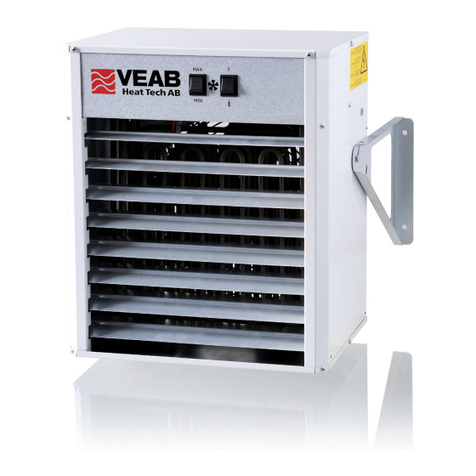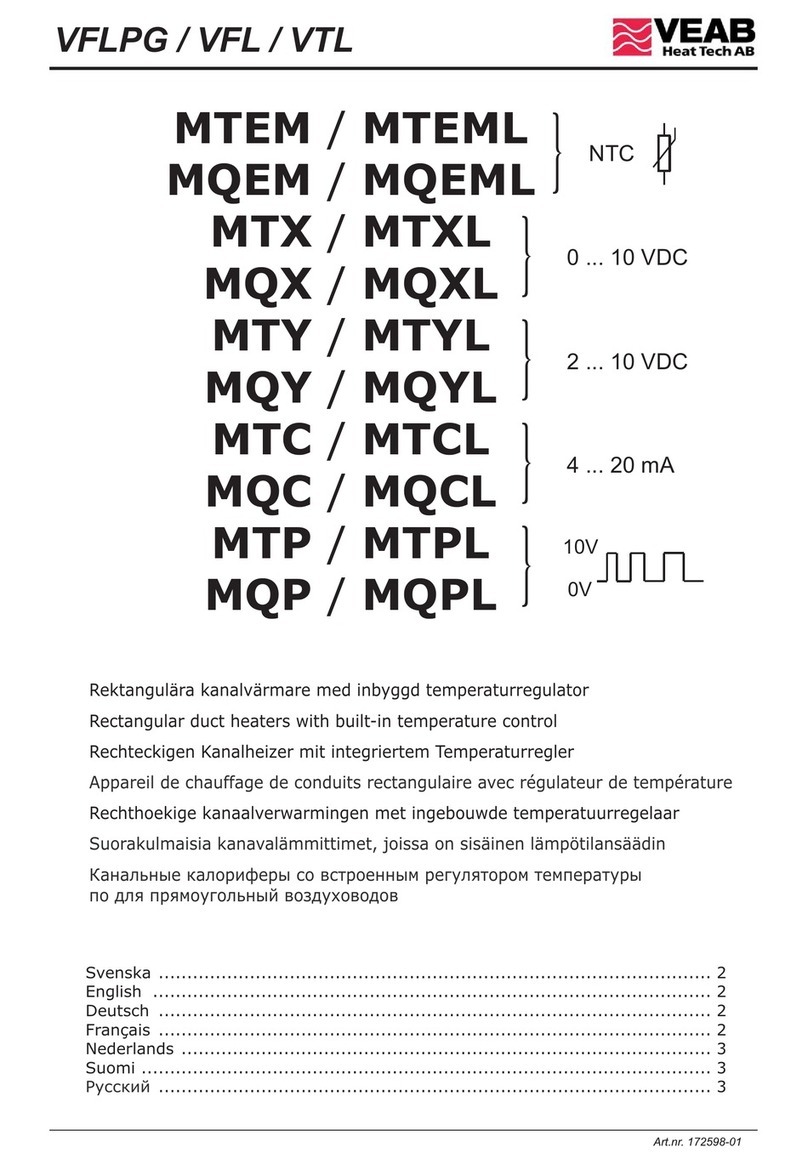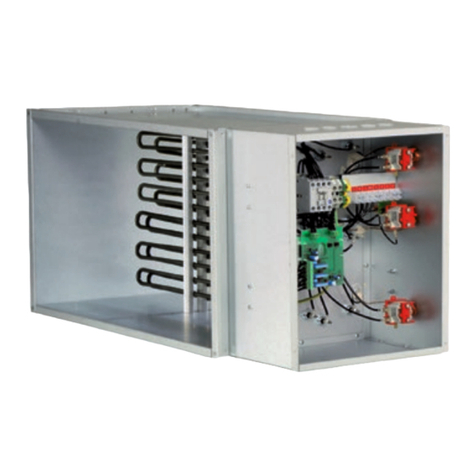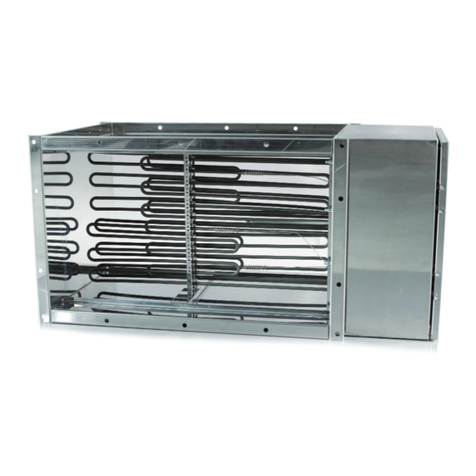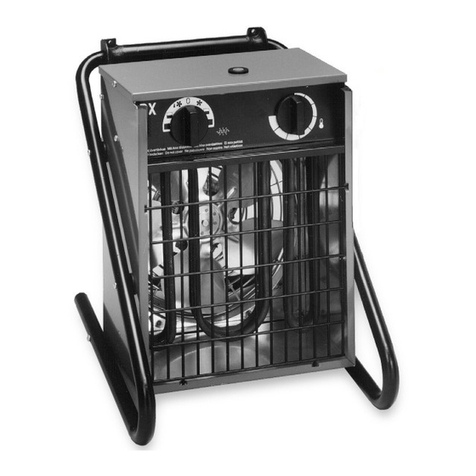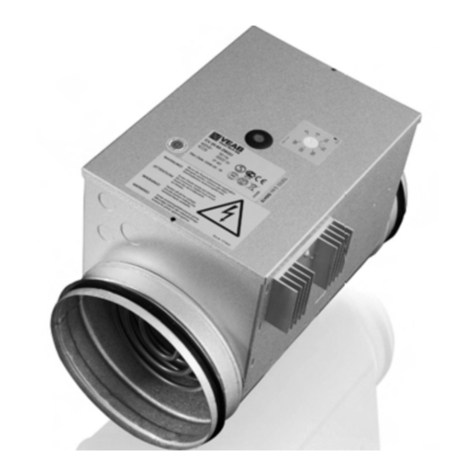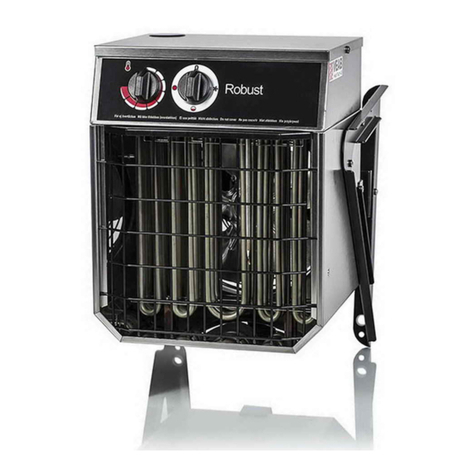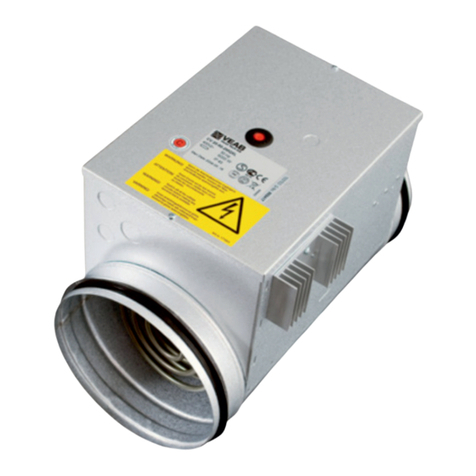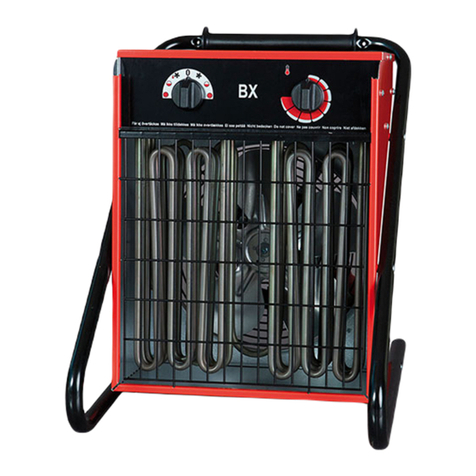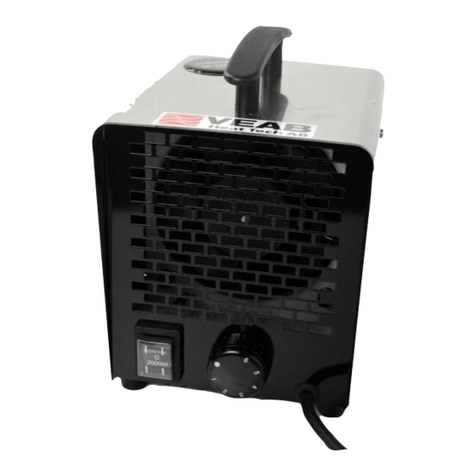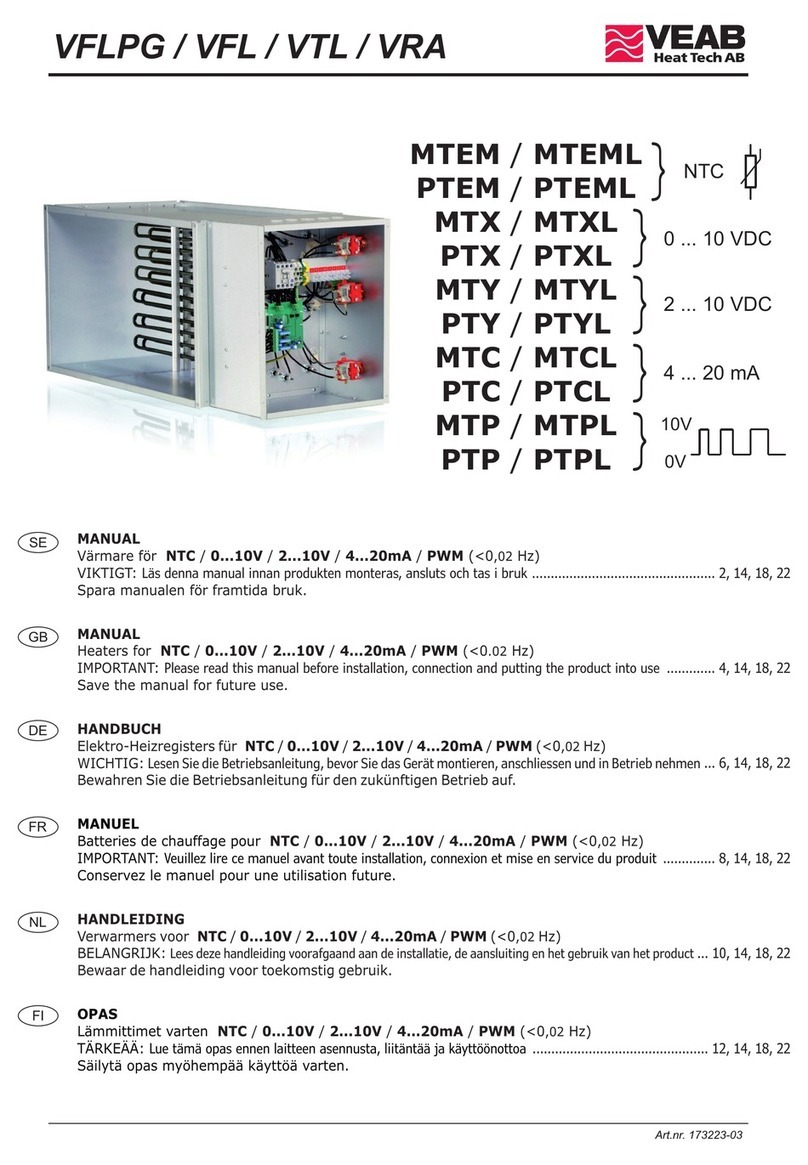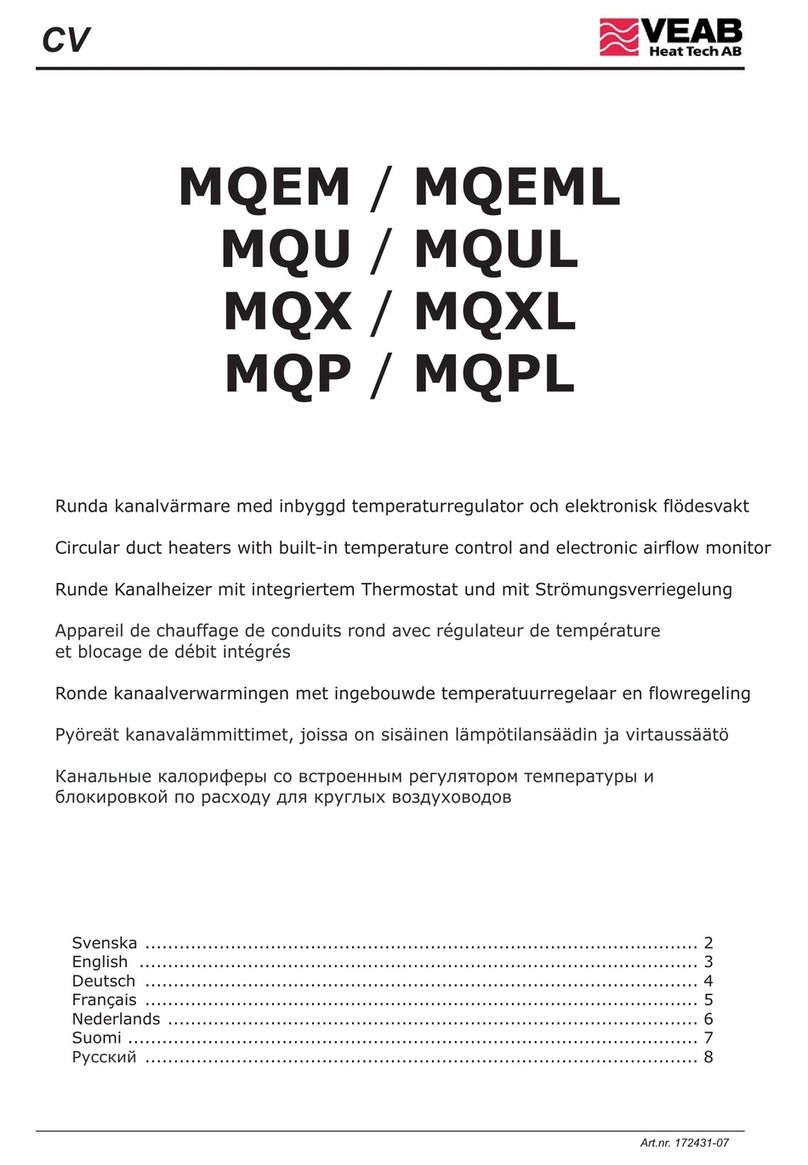
AW 63s, 63a
2
Säkerhetsinformation
Denna apparat får användas av barn över 8 år, personer med fysiska- eller psykiska funktionshinder samt
personer som saknar erfarenhet, men endast under förutsättning att de har fått noggranna instruktioner om
apparatens funktioner och eventuella risker. Barn får ej leka med apparaten. Rengöring och underhåll får ej
utföras av barn utan att de har tillsyn. Barn under tre år ska inte vara i närheten utan ständig tillsyn.
Barn mellan tre och åtta år får endast sätta på/stänga av apparaten om den står på lämplig plats och de har
fått instruktioner om tillvägagångssätt eller har tillsyn. De ska också informeras om möjliga faror.
Barn i åldern tre till åtta år får inte sätta i kontakten, ändra inställningar eller utföra skötsel/underhåll.
VARNING – Delar av denna apparat kan bli varma och orsaka brännskador.
Barn och sårbara personer ska hållas under uppsikt.
Värmefläkten finns i fyra storlekar AW 13, AW 23, AW 43 och AW 63.
AW-s i EC utförande har endast fullvarv på fläkten, medan övriga modeller har tre fläktvarvtal.
Värmefläkten är i kapslingsklass IP 44. Kapslingsklassen medger installation i torra, fuktiga och våta rum.
Modell AW-a levereras med ventil.
För teknisk data på värmefläktarna se bilaga A.
AW 63s.
Dessa värmefläktar har ingen inbyggd reglering. Styrningen av fläktmotor och vatten löses med externa komponenter.
I lokaler där frostrisk föreligger skall frysskydd installeras.
AW 63a.
Värmefläkten har inbyggd reglering och används där frysrisk ej föreligger. I värmefläkten finns en elektronisk tre-
stegstermostat som reglerar fläktens varvtal i tre steg efter rådande värmebehov. Termostaten arbetar med intermittent
fläktdrift, dvs. även fläktmotor stannar när inget värmebehov finns. Detta medför att nedsmutsningen av vattenbatteri
och eventuella filter minimeras. Även varvtalsregleringen som håller fläkten på lägsta möjliga luftmängd minskar
nedsmutsningen. Trestegsregleringen medför också att värmefläkten stora delar av året klarar sig på de lägre varvtalen
och man får därför en låg ljudnivå. Vattenflödet regleras on/off av en ventil med påbyggt ställdon.
Öppnings- resp. stängningstid är 15 sek. Ventilen öppnar samtidigt som fläkten startar på lågvarv.
Till regleringen behövs en rumsgivare med börvärdesinställare (TG-R430) eller rumsgivare (TG-R530 eller TG-
R630) med separat börvärdesinställare (TG-R430). Stegdifferens på termostaten är 1°C.
Som alternativ till TG-givare kan en extern 0... 10V DC styrsignal kopplas till den elektroniska termostaten.
AW-a har också en utgående styrsignal. Denna funktion finns oberoende om man använder TG-givare eller
inkommande 0... 10V DC styrsignal. Den utgående styrsignalen kan slavstyra upp till fem andra AW-a eller CAW-a.
(CAW-a är VEABs serie av takmonterade värmefläktar). Vill man slavstyra fler än 5st värmefläktar från gemensam
givare eller 0... 10V DC styrsignal använder man utgånde styrsignal från en slavstyrd AW-a.
Exempel på inkoppling av givare eller styrsignal finns på bilaga F, G, H och N (J, L och M för EC) i denna folder.
SE
Tillbehör AW a-s (se bilaga B)
Filter AWPF.
Planfilter för montage i AW 63 mellan fläkt
och vattenbatteri.
Luftriktare AWLH.
På värmefläkten sitter som standard alltid en luftriktare
som riktar luften snett nedåt. Som tillbehör finns
luftriktare AWLH som riktar luften i sidled.
Luftaccelerator AWLA
Förlänger kastlängden med i snitt 40%.
Kan ej användas tillsammans med AWLH.
Monteras enl. separat anvisning.
Väggkonsol AW V.
Användes för montage av värmefläkten på vägg eller
montage i taket med vertikal luftström.
Takkonsol AWT.
Användes för montage av värmefläkten i tak med
horisontell luftström.
Kan även användas ihop med väggkonsol.


















